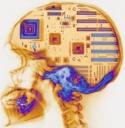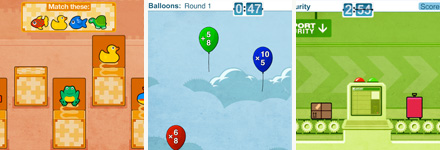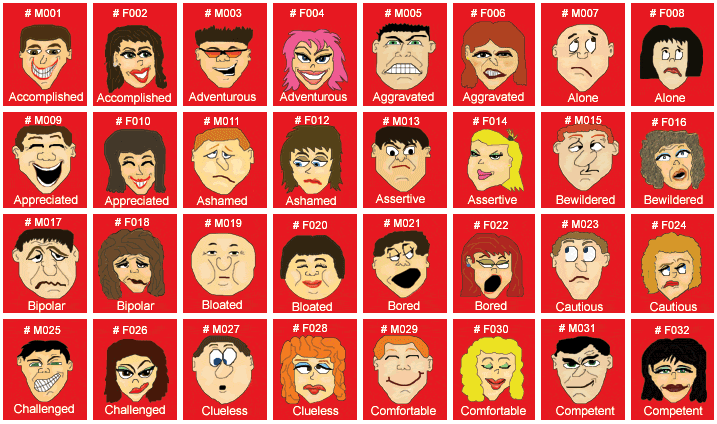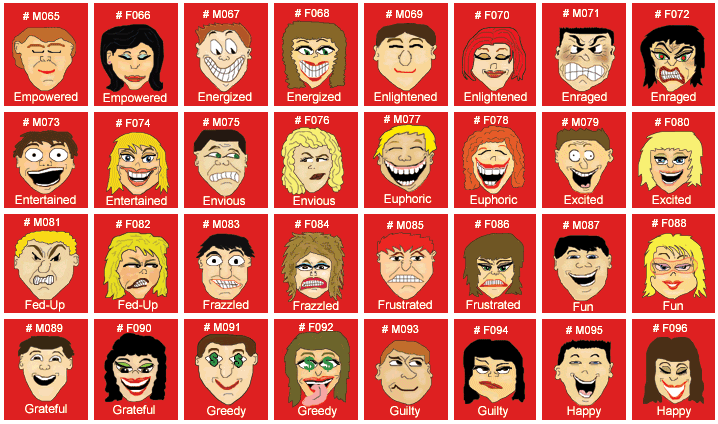Archive for December, 2009
Six Weeks of On-Line Brain Training Free!
Tuesday, December 8th, 2009 The Brain Test Britain Experiment, sponsored by King’s College and others, and hosted by the BBC offers you a chance to participate in a large-scale professionally managed experiment in brain training. For six weeks, working for just 10 minutes 3 times per week, you will play brain training software games over the web. You can play/train more if you like. Pre and post tests will measure if you have improved specific brain skills.
The Brain Test Britain Experiment, sponsored by King’s College and others, and hosted by the BBC offers you a chance to participate in a large-scale professionally managed experiment in brain training. For six weeks, working for just 10 minutes 3 times per week, you will play brain training software games over the web. You can play/train more if you like. Pre and post tests will measure if you have improved specific brain skills.
Seems like a great way to take brain training for a test run and participate in what could be a landmark study.
Designers Launch New Business in 24 Hours
Monday, December 7th, 2009Imagine a business that is conceived, designed, built and launched in 24-hours. And then gets 67 bids and is sold a week later on e-bay for $5100.
Lots of interesting cognition here. For example, consider the cognitive processes of the instant-entrepreneurs and the cognitive impact of their 24-hour-business:
 “There was a large brainstorming with everyone involved to start with and then we split into pairs,” said Mr Mosley. “We all had a think about what we liked and then the pairs had three minutes to pitch their ideas.”
“There was a large brainstorming with everyone involved to start with and then we split into pairs,” said Mr Mosley. “We all had a think about what we liked and then the pairs had three minutes to pitch their ideas.”
Most were quickly discarded because they could not be built in time. A vote selected the winner. ‘Shop by colour’ came top, narrowly beating DeathVolt, a depository for internet usernames and passwords that are then passed onto next if kin when the customer dies and a concept called ‘Lists’ that simply let people compile and share the favourite ‘top tens’ of anything in a collaborative manner.
“If you are really under time pressure you are better off taking a decision quickly,” said Mr Mosley. “We were already an hour behind schedule and any more we would not have been able to create anything.”
After pizza, they knuckled down to the hard work. The programmers redesigned open source software that recognised colour in pictures to work for an online retail shop and the sales team called in a favour from affiliate feed specialist TradeDoubler.com to list clothing ranges from retailers Wallis and Dorothy Perkins – a process that would normally take weeks. “What impressed me was that the marketing people that came up with the DrHue logo were the same people who did not originally like the idea,” said Mr Mosley.
For more info on the experience and a video go here. This takes the idea of rapid prototyping to an entirely new level.
Jugaad Innovation – fast, low cost, on-the-fly
Saturday, December 5th, 2009 Article in BusinessWeek that describes a new model of innovation, called jugaad (pronounced “joo-gaardh”), emerging from India. The idea is to focus on the immediate needs of customers and rapidly improvise with extremely limited resources. Supposedly this is part of what has driven the success of Tata Motors creators of the Tata Nano. A car concept that is being widely mimicked.
Article in BusinessWeek that describes a new model of innovation, called jugaad (pronounced “joo-gaardh”), emerging from India. The idea is to focus on the immediate needs of customers and rapidly improvise with extremely limited resources. Supposedly this is part of what has driven the success of Tata Motors creators of the Tata Nano. A car concept that is being widely mimicked.
Tie Designs to Emotions via Cartoon Magnets
Friday, December 4th, 2009The Mood Swingers offers customized promotional magnetic strips that you can hang on a refrigerator or other metal surfaces to associate emotional states with your designs. A flexible, low cost material for cognitive designers?
Designing for Self Control
Thursday, December 3rd, 2009 Controlling (or more broadly regulating) our own behaviors in the face of powerful thoughts, emotions, memories and cravings is one of the central challenges in modern society. It is also one of the reasons for bothering with cognitive design. Designing to enable self-control is a foundational challenge for cognitive designers.
Controlling (or more broadly regulating) our own behaviors in the face of powerful thoughts, emotions, memories and cravings is one of the central challenges in modern society. It is also one of the reasons for bothering with cognitive design. Designing to enable self-control is a foundational challenge for cognitive designers.
That is why I am always on the lookout for new scientific studies with designable insights into cognition and neurology of self control/regulation. Just found a new brain scanning study on cocaine users from the Brookhaven National Lab that may settle a long standing issue. The study found that cocaine user’s can control cravings for the drug even after they have been exposed to cues that trigger the craving. This is an important finding because often it is assumed that once exposed to a cue or trigger our capacity for self control approaches zero. As the researchers state:
“Many current drug treatment programs help addicted individuals predict when and where they might be exposed to drug cues so that they can avoid such situations,” Volkow said. “While this is a very useful strategy, in real-word situations, cues may come up in unexpected ways. Our findings suggest that a clinical strategy that trains cocaine abusers to exert greater cognitive control could help them selectively inhibit the craving response whenever and wherever drug cues are encountered — whether expectedly or unexpectedly.”
So there is scientific evidence to encourage the design of post-cue self control strategies even when faced with something as powerful as the craving for cocaine.
What Are We Designing Again?
Tuesday, December 1st, 2009 On Core77, Ken Fry, a Director at Artefact, discusses 10 ways to accelerate the remaking of industrial design into experience design. Some of his remarks point towards designing for how minds really work (cognitive design). There is a call for a focus on emotion, user motivations, the meaning behind the artifact, low cognitive load (keep it simple) and so on. A sample:
On Core77, Ken Fry, a Director at Artefact, discusses 10 ways to accelerate the remaking of industrial design into experience design. Some of his remarks point towards designing for how minds really work (cognitive design). There is a call for a focus on emotion, user motivations, the meaning behind the artifact, low cognitive load (keep it simple) and so on. A sample:
”1. Design beautiful experiences, not beautiful artifacts
History is littered with beautiful objects that are culturally offensive, socially anemic, environmentally irresponsible, useless, or unusable. Consider all of the contexts of the artifact that you create: How is the product used over time? Where does it live? Who uses it? How does it fulfill the practical needs of the person using it? And consider all of the meanings behind the artifact: What are the emotional, cultural, social, and environmental impacts of the product? The physical artifact will be trivial without considering these larger contexts and meanings; indeed, they are what define the experience. Think beyond the object and consider all of these contexts of use. Apply a design process that helps you learn about these contexts and experiences. Work toward an experience-oriented solution instead of an object-based result.”
 In cognitive design, we view an experience as a themed set of mental states that may be private or shared. The goal is to design to achieve a specific set of mental states throughout the life cycle of the artifact. So there is some common ground between cognitive and experience design.
In cognitive design, we view an experience as a themed set of mental states that may be private or shared. The goal is to design to achieve a specific set of mental states throughout the life cycle of the artifact. So there is some common ground between cognitive and experience design.




